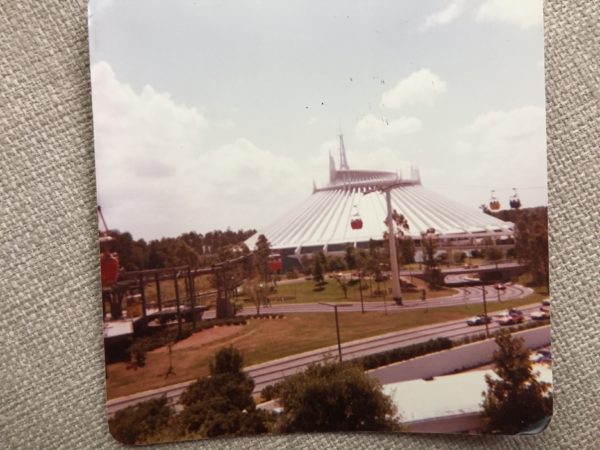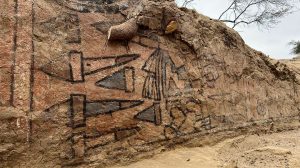
Skywoman Descending Turtle Island, Arnold Jacobs
Our class discussions about Dr Space Junk vs The Universe have touched on issues concerning space exploration and the potential colonization/industrialization of outer space. The frameworks we use in these discussions are very important. As we learn about Indigenous histories, postprocessual archaeology, and the future of anthropology, we should consider which paradigms we are operating within and where our research is based. Do we understand Western science as fact? Regard Indigenous history as myth? Are we driven by curiosity, or is there a looming sense of entitlement and capitalism in our language and discussion?
Question your understanding and conceptualization of what space is. We consider ourselves so far removed from the world above, so it could even be seen as preposterous to the colonized mind that ‘space’ may be entitled to the same respect, cultural consideration that we (more or less) treat our planet with. Much like the ecology of our earthly landscape, this planet is part of a large interstellar community, and we are as well.
I would also ask us to suspend our Westernized mindsets for a moment and reconsider our trust in science and denial of ‘myth.’ Only when we distrust, silence and regard histories as myth can we dignify colonial campaigns on this planet and intercellestially. I want to bring the story of Sky Woman into the conversation when discussing the conceptualization of space. “In the beginning there was Skyworld,” starts Robin Wall Kimmerer, author of Braiding Sweetgrass. Kimmerer describes how Sky Woman initially fell from the Sky World above. As she tumbled into the world below, she was caught by a flock of geese and greeted by a great turtle, among many other animals welcoming her to a world she had never known. Together they built the land, and they grew plant life from the seeds she offered as thanksgiving upon her arrival. We live today as descendants of Sky Woman, a mother native to the world above, and we will continue to offer thanks to this earth and to our co-inhabitants for welcoming us here. Relationality is key in the history of Sky Woman. Descendant from the sky, nurtured by the world below, tending to the land we sew. If we were to consider, actually consider, these truths, would we not approach the Sky World differently?
With a perspective that essentially separates us from the world around us, you can see how easily we can turn a blind eye to exploitation on this planet and, to an even greater extent, ignore the exploitation we cannot see or comprehend, those taking place intercelestially. Western methods of science (the ones that have led the march into space) do not consider many spiritual or immaterial aspects of the world around them. Space expedition and colonization are rooted in western philosophies that not only disregard and mythologize Indigenous truths, but also excuse/corroborate the exploitation of land and space (on this planet and otherwise) through the denial of those truths. If we were to consider Sky World and other histories in our conversations, respect and protection might come more easily to the industrialized mind when considering ‘outer space.’ Regarding the universe as ‘community’ is just the beginning of understanding space, not as a land for discovery and exploitation but as home or friend, worthy of respect and honor.

River of Souls, Carl Gawboy
References
A. Mitchell et al. Dukarr lakarama: Listening to Guwak, talking back to space colonization,
Political Geography, Volume 81, 2020, https://www.sciencedirect.com/science/article/pii/S0962629818304086
Gorman, Alice. Dr Space Junk vs the Universe: Archaeology and the Future. The MIT Press, 2020.
Kimmerer, Robin Wall. Braiding Sweetgrass. Vancouver, B.C.: milkweed editions, 2013.
Maryboy, Nancy C. “Process and Relationship in Indigenous Astronomy: Connectivity of Mother Earth and Father Sky.” International Journal of Applied Science and Sustainable Development, no. 2 (2020).
Additional Reading
https://jps.library.utoronto.ca/index.php/des/article/view/19145/16234
https://academic.oup.com/astrogeo/article/47/5/5.27/231805
https://www.researchgate.net/profile/Philip-Clarke-4/publication/276207325_THE_ABORIGINAL_AUSTRALIAN_COSMIC_LANDSCAPE_PART_1_THE_ETHNOBOTANY_OF_THE_SKYWORLD/links/555292f308ae6943a86d751f/THE-ABORIGINAL-AUSTRALIAN-COSMIC-LANDSCAPE-PART-1-THE-ETHNOBOTANY-OF-THE-SKYWORLD.pdf














 .
. 


